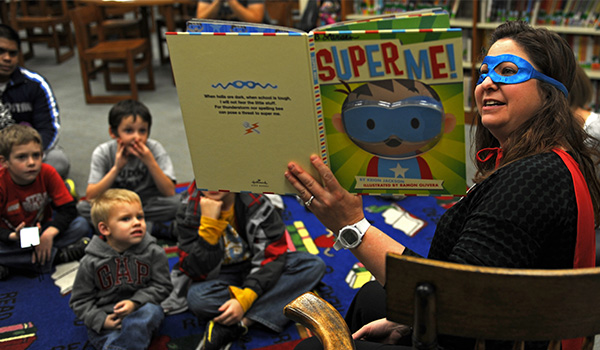Over the summer, home is an incredibly important place in the development of a love for reading. That center shifts when the days get cooler and school begins. The classroom becomes the place where children continue to build their literacy skills. Instilling this desire goes beyond lessons taught in English class. There are amazing stories to be told in Science, History, the Arts and Social Studies. Every subject offers tales that can be inspirational to students!
The best time to foster a love of reading in students is when they are young. Younger students learn by imitating what they see in the world around them. In school, this means seeing teachers reading books while they are doing work at their desk. Or having a discussion with the principal about what books they are reading. Becoming role models for reading and literacy can go a long way to developing a love of reading in a student. There are plenty of ways to do that as a school:
- Share what you read – Let students know that reading is not only for homework! Teachers and staff should be willing to share what they are reading with their students, letting them see that reading is an activity for everyone.
- Read a book to the class – Students do not have to do all the reading themselves. Opening a book and telling the students a story, complete with different voices and changes in vocal tone, can bring the words to life. This technique is incredibly helpful for students who learn best by listening. Hearing the words also helps improve student vocabulary.
- Give students learning strategies – There is nothing quite like the feeling of accomplishment. Especially on a task is difficult. Developing multiple ways for students to build reading skills helps them overcome these obstacles on their own. Every word they learn on their own boosts their confidence in their reading skills.
- Drop Everything And Read (DEAR) – First mentioned by Beverly Cleary, Drop Everything And Read is a great way to give students an educational, unplanned break. Between lessons teachers can have students read a book of their choosing, showing that reading can be done at any time. The combination of self selected reading materials and the encouragement of someone they look up to delivers positive reinforcement of their hobby. Students will want to read more as a result.
- Fill the class with books – Not every student will have a book for an impromptu reading break. If they do not have one they are working on, having a library in class can provide them options. Composing this library of books and topics the children enjoy will make DEAR time more enjoyable!
- Create active assignments based on what they have read – Worksheets about what a student has just read can dampen their enthusiasm. They can write stories about what happens next, or discuss in class what they think the reading meant. Having them engage with the story can help reinforce what they just read and improve reading comprehension.
The environments that students are part of is only part of the equation for encouraging reading. Demonstrating that reading is a pleasurable and relaxing activity helps students develop a similar perspective. The combination of parents and teachers acting as reading role models is the best way possible to encourage a love of reading in children.

